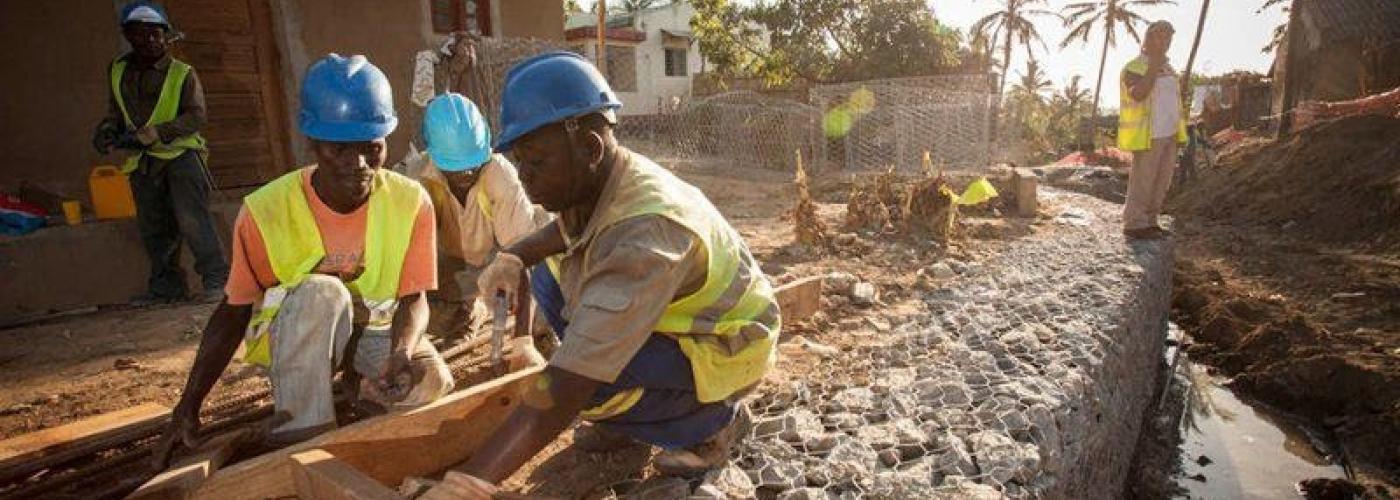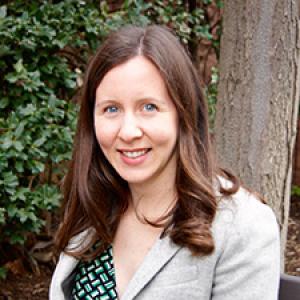This Bond Could Be a Breakthrough in Combatting West Africa’s Housing Shortage
Image

For most West Africans, homeownership is out of reach. Rapid population growth and urbanization have created a housing shortage, exacerbated by the lack of access to affordable mortgage loans to finance purchases. With support from USAID INVEST, the Caisse Regionale de Refinancement Hypothecaire (CRRH) is bringing a new investment opportunity to U.S. markets that offers investors attractive financial and social returns — and West Africans the resources to make homeownership a reality.
By Lauren Yang, INVEST Communications Advisor
The beginning of the COVID-19 pandemic marked a particularly difficult period for aspiring homeowners in the U.S. An explosion of demand overwhelmed markets as low interest rates and inventory (due to compromised construction and supply chains, fewer new houses, and fewer sellers putting their homes on the market) triggered bidding wars and a surge in prices. As the global housing market — both demand and prices — continues to rise, so do concerns of the economic, social, and political implications of housing inequality and a young generation denied access to homeownership — a major engine of wealth creation and poverty alleviation.
For most West Africans, however, owning a home was out of reach long before the pandemic hit. Increased urbanization has triggered a housing crisis on the continent, with millions of units needed to address the current backlog of housing needs. As the population continues its rapid growth, so will the imbalance of housing supply and demand. According to The Washington Post, thirteen of the world’s biggest urban areas will be in Africa by the end of the century (currently, it’s just two), as well as more than a third of the world’s population.
The availability of housing isn’t the only problem. Many prospective African homeowners lack the ability to finance homes, as well. Approximately 110 million people live in the eight countries that make up the West African Economic and Monetary Union (WAEMU). Each year brings a demand for about 800,000 new housing units; WAEMU banks annually issue only 15,000 new mortgages.
In 2012, the Togo-based mortgage re-financing company Caisse Regionale de Refinancement Hypothecaire (CRRH) began to supply its members — West African local banks and financial institutions — with access to long-term, fixed-rate loans. CRRH’s financing enabled these entities to provide West Africans with affordable, longer-term mortgages with fixed interest rates. With 75 percent of CRRH’s beneficiaries earning less than $1,090 each month, the increased affordability and accessibility of these loans has helped to address the housing shortage and economically empower Africa’s lower-middle class by turning them into homebuyers.
However, CRRH has its limits. Local, long-term financing is in limited supply in Africa — and without access to new funding resources, local banks cannot underwrite the growing demand for sustainable mortgage loans. Prospective homeowners may be forced to turn to short-term loans with harsh terms and prohibitively expensive monthly payments, or to forego a loan and homeownership completely. To meet the region’s surging need for affordable housing, CRRH would need to raise $800 million over the next five years.
“Africa has very limited access to long-term capital,” says Aymeric Saha, CEO of financial advisory firm MiDA Advisors. “It has low savings rates, tied to a young continent and a population that hasn’t worked enough to start saving. Ultimately, the best sources of long-term capital are here in the U.S. How do we connect Africa’s need for sustainable liquidity for housing to U.S. capital markets, and how do we structure it in a way that investors in the U.S. can offer their investments and liquidity into African institutions to help?”
Through Prosper Africa and the INVEST initiative, USAID has partnered with MiDA Advisors and CrossBoundary — another financial advisory firm mobilizing investment into Africa — to help CRRH tap into U.S. capital markets. CRRH is receiving Prosper Africa support from both USAID and the U.S. International Development Finance Corporation (DFC) to issue a first-time CRRH West Africa Impact Affordable Housing bond on the U.S. market to raise $256 million, as well as $64 million in local currency bonds in West Africa.
American institutional investors, such as pension funds, mutual funds, and insurance companies, manage large amounts of money but are facing low yields in developed markets. African capital markets offer higher yields, but they can be harder to access and come with higher risks, both real and perceived. For this reason, pension funds invest vanishingly little of their assets under management in Africa. With a credit-enhanced bond issuance through a U.S. special purpose vehicle, CRRH can address both the risk appetite and scale appropriate for institutional investors, who typically have mandates to invest larger amounts in safer vehicles.
“Being able to access U.S. capital markets and the liquidity they provide can be a real turning point for lots of different countries and regions,” says Vanessa Holcomb Mann of USAID INVEST. “There are bond offerings on the U.S. market from many different emerging and developing countries, but there’s a dearth of those that offer exposure to places like Togo and West Africa. Plus, the stakeholders and institutions involved make this not just a product that allows U.S. investors to invest in West Africa — but an attractive product that meets their risk profiles.” In addition, U.S. investors often struggle to evaluate and price African risk, so the CRRH bond offering could help to serve as a benchmark to encourage U.S. investors.
To help mitigate risk, the bond will have a credit guarantee from the DFC that ensures that, if CRRH defaults on its debt, the DFC would make payments owed to U.S. investors. A guarantee from a U.S. institution increases the bond’s appeal — a powerful risk mitigation tool for a first-time issuer in U.S. capital markets like CRRH, as well as a more sustainable structure compared to alternatives.
“The DFC Guarantee is one of the best tools the U.S. Government can use at scale in key sectors like housing,” says Holcomb Mann. “It is a key tool for supporting economic development, helping countries tap into U.S. capital markets, allowing U.S. investors to get access to new opportunities, and getting more investors directly connected to Africa.”
Additional efforts to attract U.S. investors include measures to mitigate foreign exchange risks, enabling investors to take comfort investing in a bond that is dollar-denominated and guaranteed. To make it easier for U.S. investors to access this opportunity, CRRH is utilizing a U.S. Trust as a vehicle and two U.S.-based financial institutions (Bank of America and Brean Capital) as placement agents to help advance the transaction under U.S. market requirements.
The CRRH transaction is an example of how close collaboration between USAID and the DFC can lead to large transactions that meet the needs of American investors and enable countries across Africa to access the capital they need to achieve their development goals. Unfortunately, this model isn’t necessarily easy to replicate. It took several years, many meetings, significant resources, and the right conditions for the various institutions and stakeholders to align. CRRH had the governance, management team, and track record to convince the DFC that it could be a reliable partner — but needed significant assistance from INVEST and its partners to help identify, structure, and refine the deal.
Few firms like CRRH would attempt to place an offering like this without an advisor that understands the risk mitigation tools available through the U.S. Government and ways to access U.S. capital markets. Through MiDA and CrossBoundary, INVEST provided technical assistance that unlocked this opportunity for CRRH. MiDA, which helped CRRH to conceptualize and advance the transaction since its inception, has continued to support the first-time issuer through the DFC guarantee application and due diligence process, and coordinate between the many stakeholders involved. CrossBoundary will conduct an assessment in partnership with MiDA to capture the transaction’s impact, gathering data to ensure that this specific approach would provide the desired social return on investment. As the DFC typically works with more mature entities, this early-stage support from USAID is critical in teeing up viable transactions for DFC support and U.S. capital markets.
Here are two pieces of advice from Saha and Holcomb Mann on cultivating innovative financing solutions:
- Facilitating a transaction like this is an intensive, hands-on process.
Saha: CRRH wasn’t aware that a trusted solution existed to tap into U.S. capital markets and — they were still early on their awareness of what was possible and with whom. Having technical assistance unlocked this initial concept of trying to diversify investors and go into international markets — how do you start, and what tools do you have? All of that was critical for converting an idea and getting down to work. Technical assistance sent a strong message to CRRH that they had a partner with USAID INVEST, and it convinced their board that they should look into this seriously and that they had the right partnership and someone to help them get to the finish line. - Focus on being private sector-driven, rather than prescriptive, to avoid missing opportunities.
Holcomb Mann: To take advantage of these opportunities, you have to be proactive and have networks and an actor like MiDA in the ecosystem. We often fall short in the development community in being overly prescriptive with the private sector. Letting the private sector lead may surface opportunities we otherwise would have missed. For example, housing is not a main focus for USAID, and USAID would never have written an RFP specifically to do a housing bond in West Africa. However, this transaction and the scale of its impact — especially on affordable housing — aligns with many of our objectives, so everyone benefited from having a private-sector partner in the driver’s seat.
This post is made possible by the support of the American People through the United States Agency for International Development (USAID). The contents of this blog are the sole responsibility of INVEST implemented by DAI and do not necessarily reflect the view of USAID or the United States Government.


